Pictured above is a remarkable structure that once dominated the scenery on the northern side of Central Park.
This was the Academy of Saint Vincent on a hill that bore its name. Located on the northern portion of the park, next to the charming Harlem Meer (and nearest 103rd Street), the Academy sat nestled amid a collection of hills and bluffs left over from its original pre-park topography.
Below: House on the hill: the stark and mysterious convent of Central Park, 1861

Washington Passes Through
A narrow passage next to the convent was named McGowan’s Pass after Andrew McGowan, owner of a popular tavern that sat here called the Black Horse Tavern. (It is often spelled McGown.)
It was through McGowan’s Pass that George Washington traveled on September 15, 1776.
He and a portion of the Continental Army had escaped up to today’s Washington Heights area; when hearing that part of his army had been stopped by the British, Washington rode down the pass and led the remaining troops back up to their fortification in the Heights.
He rode back through the pass again seven years later, this time as the victor.
The British and their Hessian mercenaries built forts here to cut Manhattan off from the mainland. Later New Yorkers would seize upon this idea during the early days of the War of 1812.
Not willing to become property of the British once again, Manhattan mobilized for any potential battles, building forts all over the island and throughout the harbor.
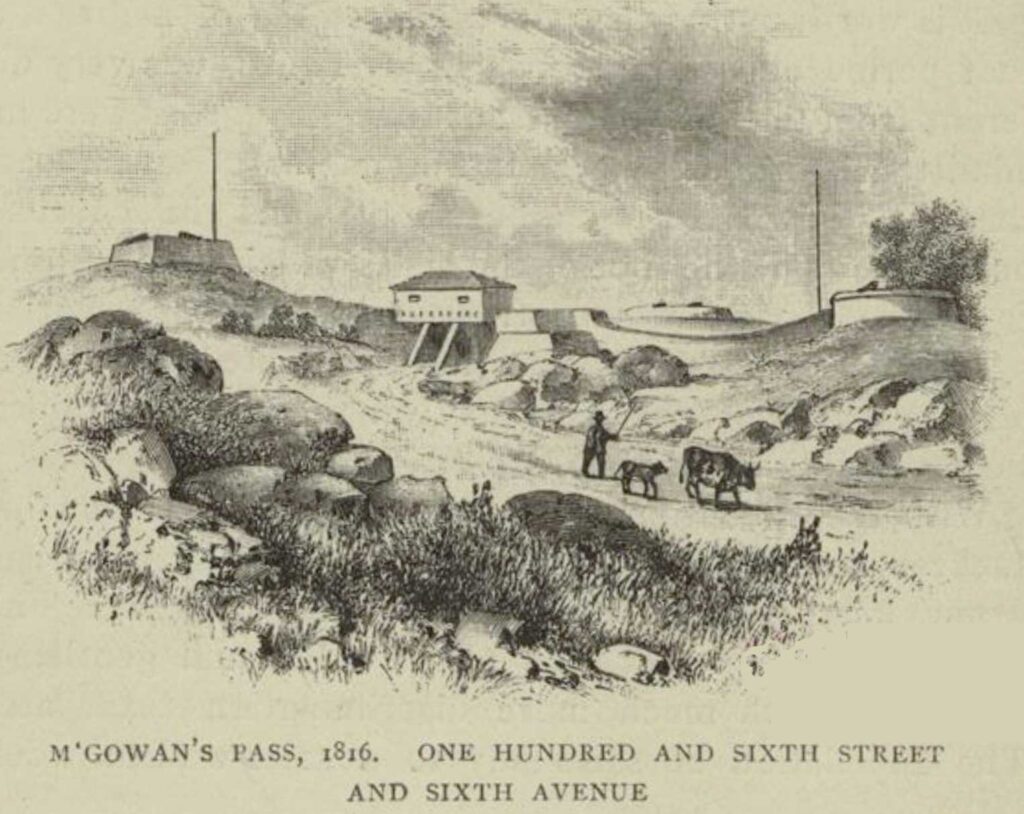
The Ghost of Old Forts
It was here at McGown’s Pass that a couple fortifications were built, including Fort Clinton (not to be confused with the fort in Battery Park, although both were named for DeWitt Clinton) and Fort Fish, named after Major Nicholas Fish, father of the New York senator Hamilton Fish.
Nothing much remains of these two old forts, which were never used as the war thankfully never made its way to the city. There are, however, two remaining structures from the early days.
A stone ledge overlooking the meer is all that remains of Nutter’s Battery, named after a farmer who owned the property. And nearby stands the Block House, its stone face still fairly solid, once armed with cannons and used to hold ammunition — that were, of course, never needed.
The Block House was fairly intact when Frederick Law Olmstead and Calvert Vaux included it in their plans for the new park, incorporating the existing building as a ‘picturesque ruin’ covered in vines.
Here’s an illustration of how the Block House looked in 1860:
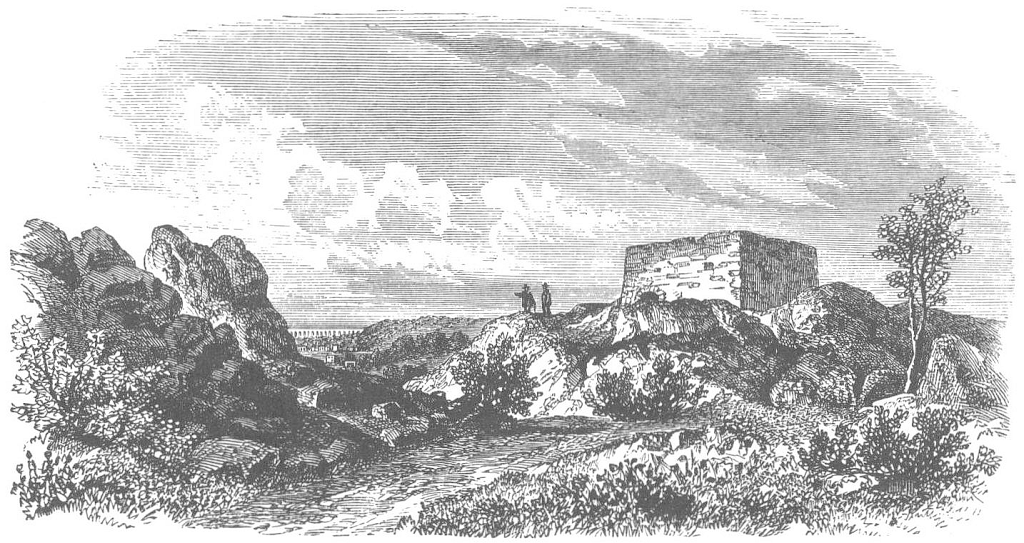
Holy Sanctuary
Before there was a park, however, there were nuns. In 1847 the Sisters of Charity of St. Vincent de Paul arrived at the still-bucolic region of Manhattan and opened the Academy of St. Vincent, a school and convent.
The nuns left when the area was incorportated into the park, however the building remained standing and utilized for several purposes. During the Civil War, it was briefly used as a hospital; later, it was a “restaurant and hostelry,” with some certainly spectacular views for guests.
Below: Some sculptured works of Thomas Crawford in the interior of Mount St. Vincent’s Convent, Central Park, north end.]
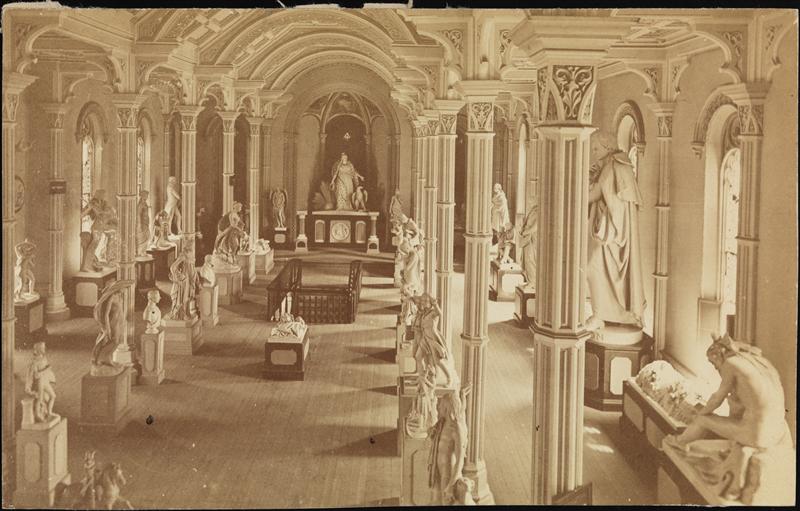
The stone chapel was even refashioned as an gallery for artwork and “stuffed specimens of animals of considerable value.” Unfortunately, the structures were destroyed in a fire in 1881. (This site has some great pictures of where the convent once stood.)
Below: The buildings on the hill, circa 1863. By this time, the Catholic sisters had moved onto a new location in the Bronx (from Wikimedia)
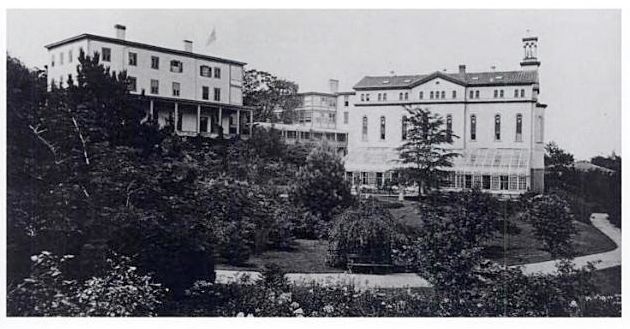
Time for a Drink
While the convent was gone by the 1880s, the area was not through with McGown/McGowan or his old tavern.
Although the Black Horse Tavern had been torn down decades earlier, a two-story refreshment pavilion was constructed at this site — “heated throughout by steam and lighted with Edison’s incandescent lights” — and later renamed McGowan’s Pass Tavern.
In 1895, McGowan’s was strangely granted its own election district as, being inside the park, it lay outside normal district boundaries. “There were four voters in this territory last year,” declared the New York Times. “They are four men employed at McGowan’s Pass Tavern.” The tavern was eventually torn down in the late 1910s.
Below: McGowan’s Pass Tavern (date unknown, but possibly around the early 1910s)
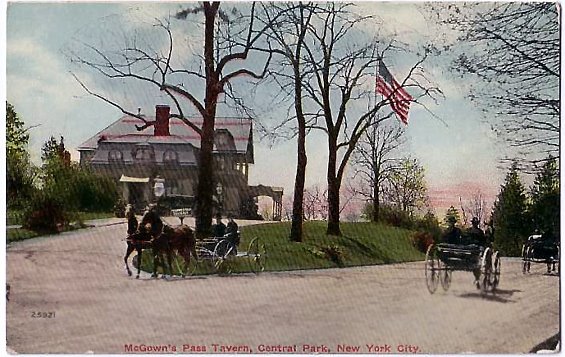
This is a bit tangental, but I love this story:
A plaque was erected at the old site of Fort Clinton in 1906 and unveiled in a publicized community event for children. It was apparently difficult for some people to find the location and “several chivalrous lads” guided people through the park to the unveiling.
However, the Times reports an incident that might be the only real battle that ever occured at this storied historical spot:
“Among the boys interested in the tablet unveiling were several whose spirit of mischief overcame their sense of the proprieties. These made misleading arrow signs …. and caused a number of persons to go far afield and arrive at the exercises late and angry. These mischievous youngsters were caught at their annoying trick by boys who were more sober and serious. Then there was a short scrimmage, and the mischievous lads scurried away through the Park.”
Finally, from a 19th century book on the War of 1812 comes this spectacular map of the various fortifications built in anticipation of battle.
Its dimensions are greatly distorted of course, but it lists the forts and blockhouses that stood in this area as well as those such as Fort Gansevoort and Fort Greene (click on the image to look at it more closely):
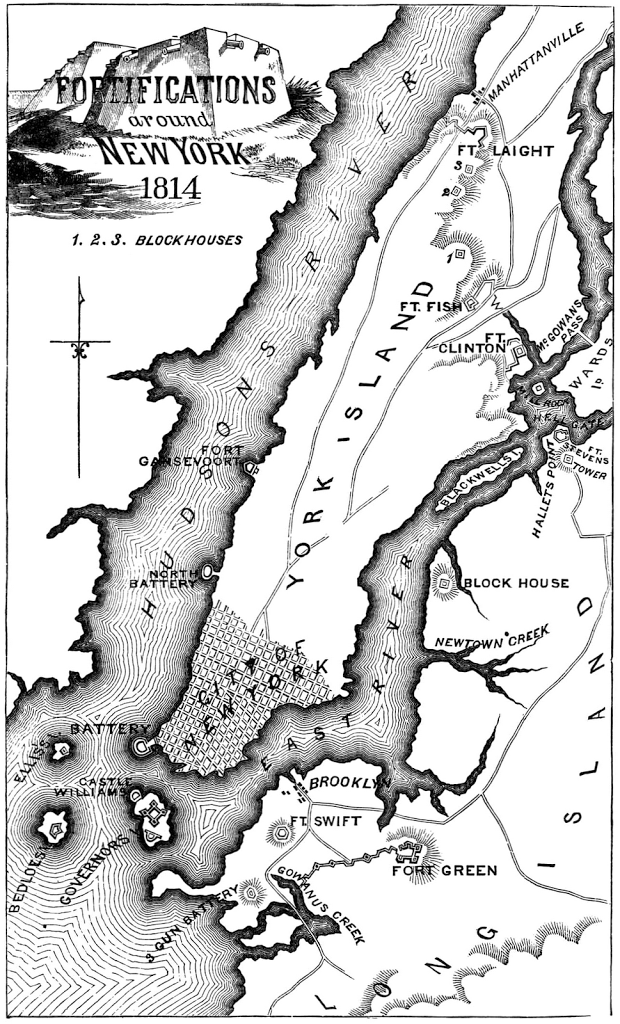
**This story originally ran in 2011. All pictures courtesy the New York Public Library except where otherwise noted

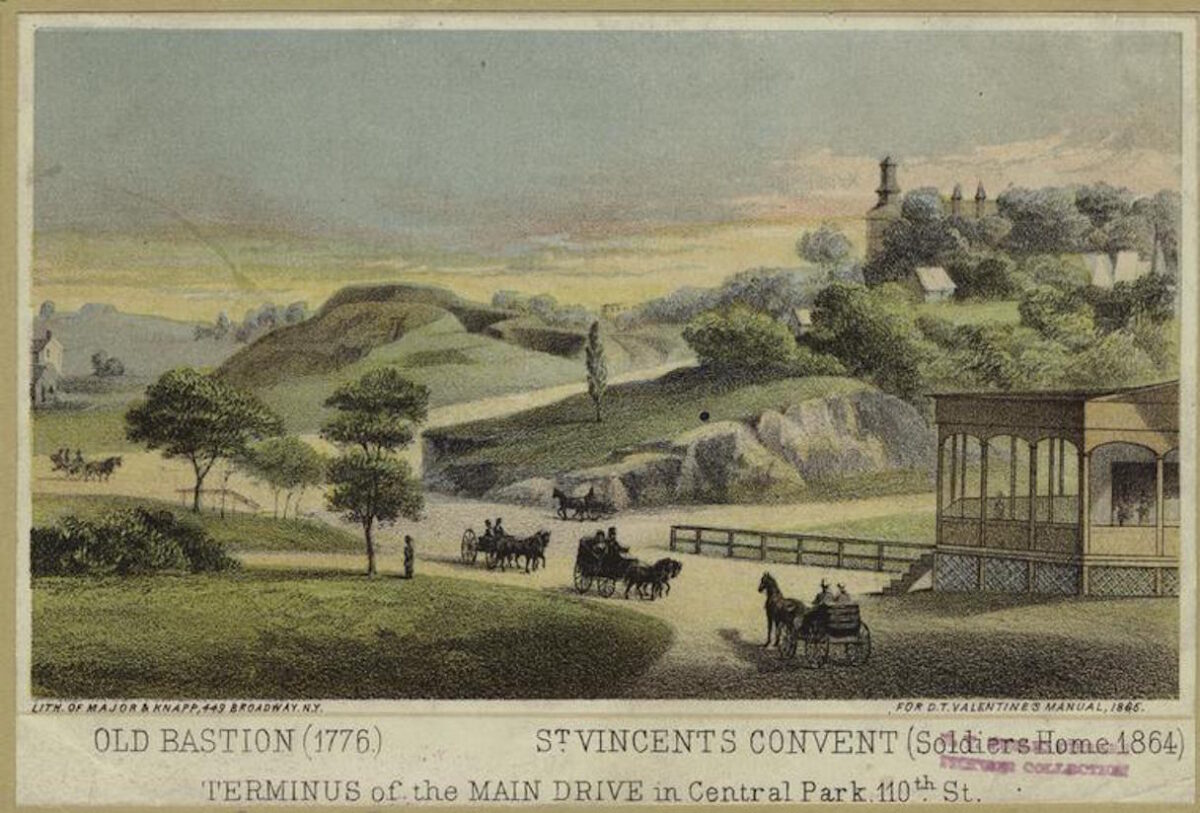
2 replies on “The Convent of Central Park and a famous Revolutionary War site”
Glad to see the reference to the “other” Fort Clinton – I don’t suppose my comment about it several weeks ago sparked this story? 🙂
“York Island” – love it, never heard that used for Manhattan before. Do you have more info on *that*?
You guys should do an article on Harlem Meer and Montayne’s Rivulet since it’s right there. Would be nice to see some more Harlem based history, pre- 20th century.